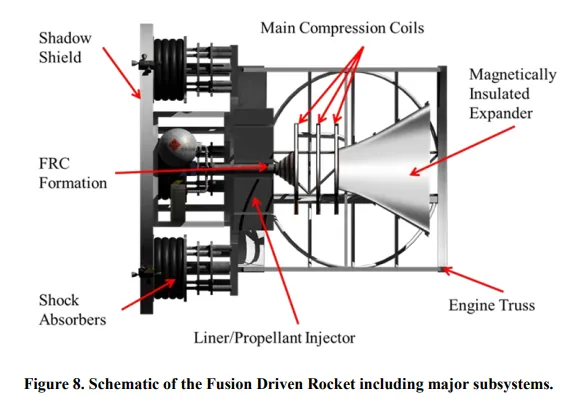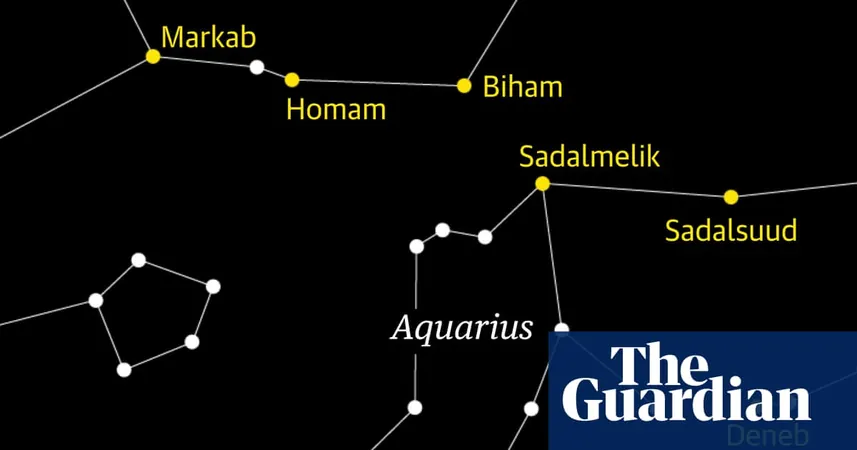
Unlocking the Stars: How Fusion Technology Could Propel Us to Proxima Centauri b
2025-07-06
Author: Jacques
A New Frontier: Proxima Centauri b Awaits!
Proxima Centauri b, the closest known exoplanet potentially nestled in its star's habitable zone, has captivated scientists and space enthusiasts alike. As efforts mount to explore this tantalizing world, innovative minds are looking beyond the restrictive boundaries of current space technology.
Fusion Propulsion: The Game-Changer We Need!
Enter Amelie Lutz, a pioneering researcher at Virginia Tech, whose master's thesis proposes harnessing fusion propulsion systems. Unlike the lightweight probes reliant on massive solar sails or laser propulsion, Lutz's vision involves sending robust probes, weighing several hundred kilograms, to this distant star.
Equipped for Discovery: What Would We Bring?
Given the potential for habitability, scientists have a wealth of sensors in mind for the journey. Ms. Lutz outlines an impressive suite of 11 instruments, from spectrometers to magnetometers, designed to delve beneath the surface, possibly even peering under ice sheets.
Communicating Across the Cosmos: A Challenge Unraveled
Sending data back from another star poses a significant challenge, but Lutz has a clever solution: utilizing Proxima Centauri's solar gravitational lens to enhance communication capabilities, aiming for a transmission speed of 10 megabits per second per watt. That's a leap forward in interstellar communication!
The Power Source: Fusion Drives Explored
At the heart of this ambitious mission lies the fusion generator, which augments both propulsion and electrical needs. Lutz studied three fusion drive concepts, each with unique fuels:—the magneto-inertial fusion rocket, the lightweight inertial-electrostatic confinement engine, and the compact Antimatter Initiated Microfusion system (AIM).
Fueling the Future: The Best Candidates for Fusion
Among the fuels considered, Deuterium-Deuterium (D-D) offers simplicity but limited yield, while Deuterium-Tritium (D-T) presents higher energy yet poses shielding challenges. Proton-Boron-11 (p-B11) is exotic but demands extreme conditions. The cream of the crop appears to be Deuterium-Helium-3 (D-He3), which packs a high energy punch with minimal neutron production, although sourcing it from the Moon could be key.
Mapping the Journey: Flybys and Orbits for Maximum Science
Lutz evaluated various mission profiles, from rapid flybys at 24,000 km/s to a more manageable 25 km/s pass, allowing for genuine scientific data collection. Even more exciting, with some trajectory tweaks, her thesis suggests a bounded orbit around Proxima Centauri b, opening the door for extensive longitudinal studies.
Promising Predictions: A Fusion-Driven Mission in Sight
According to Lutz's calculations, her fusion-driven rocket using D-He3 could reach the Proxima Centauri system within approximately 57 years. While much of this remains theoretical, the prospect of successful fusion drive testing looms on the horizon. Though challenges persist, Lutz's vision opens the door to a new space age—one that could unfold in her lifetime.
The Final Frontier Awaits!
Though we're still far from launching a fusion-powered mission to Proxima Centauri b, the work of visionary researchers like Lutz shines a light on what's possible, inspiring generations to dream beyond our world.









 Brasil (PT)
Brasil (PT)
 Canada (EN)
Canada (EN)
 Chile (ES)
Chile (ES)
 Česko (CS)
Česko (CS)
 대한민국 (KO)
대한민국 (KO)
 España (ES)
España (ES)
 France (FR)
France (FR)
 Hong Kong (EN)
Hong Kong (EN)
 Italia (IT)
Italia (IT)
 日本 (JA)
日本 (JA)
 Magyarország (HU)
Magyarország (HU)
 Norge (NO)
Norge (NO)
 Polska (PL)
Polska (PL)
 Schweiz (DE)
Schweiz (DE)
 Singapore (EN)
Singapore (EN)
 Sverige (SV)
Sverige (SV)
 Suomi (FI)
Suomi (FI)
 Türkiye (TR)
Türkiye (TR)
 الإمارات العربية المتحدة (AR)
الإمارات العربية المتحدة (AR)